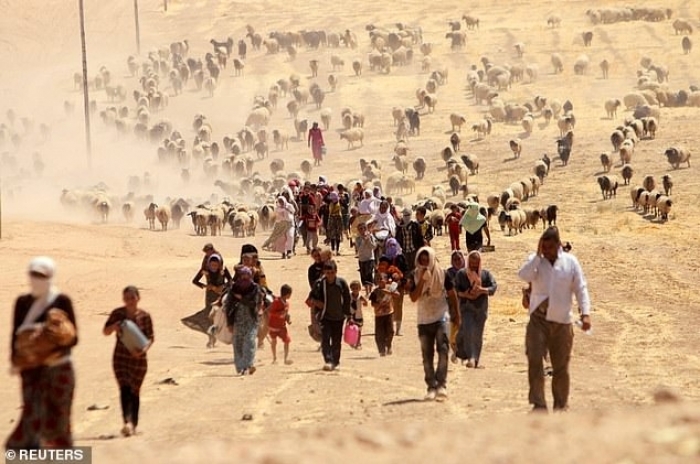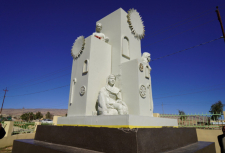The inevitable migration

In the past three decades large steps have been taken in our understanding of Yazidizm. Yazidis, adherents of the monotheistic non-proselytising Kurdish religion, live in all parts of Kurdistan. The total population of Yazidis in the world varies, but a number of 550,000 seems to be the most realistic estimate. Yazidis mainly live in Iraqi Kurdistan, Syria, Turkey (a small population), but also in Armenia and Georgia. The majority of them settled in the Caucasus in the beginning of the 20th century, fleeing religious oppression by the Ottoman Empire. Yazidis also live in Iran, where their numbers are estimated from one to a few thousand people.19 Only little information about them can be obtained, because they have always tried to stay as invisible as possible in Iran.20 A British diplomat and author of a number of novels about the Qajar dynasty in Iran, James Justinian Morier (1780–1849), mentions how a number of Yazidi tribes moved to Kermanshah and asked for permission to stay there. From the 1980s on, there were at least three waves of migration of Yazidis from the homelands to European countries: in the 1980s there was migration from Turkey to Germany, in the late 1980s–1990s many Iraqi Yazidis went to Europe, and around 1990 there was a massive wave of migration from Armenia and Georgia to Russia, the Ukraine and Europe.
David Babaev
Yazidis.info
Tags:
The inevitable migration

In the past three decades large steps have been taken in our understanding of Yazidizm. Yazidis, adherents of the monotheistic non-proselytising Kurdish religion, live in all parts of Kurdistan. The total population of Yazidis in the world varies, but a number of 550,000 seems to be the most realistic estimate. Yazidis mainly live in Iraqi Kurdistan, Syria, Turkey (a small population), but also in Armenia and Georgia. The majority of them settled in the Caucasus in the beginning of the 20th century, fleeing religious oppression by the Ottoman Empire. Yazidis also live in Iran, where their numbers are estimated from one to a few thousand people.19 Only little information about them can be obtained, because they have always tried to stay as invisible as possible in Iran.20 A British diplomat and author of a number of novels about the Qajar dynasty in Iran, James Justinian Morier (1780–1849), mentions how a number of Yazidi tribes moved to Kermanshah and asked for permission to stay there. From the 1980s on, there were at least three waves of migration of Yazidis from the homelands to European countries: in the 1980s there was migration from Turkey to Germany, in the late 1980s–1990s many Iraqi Yazidis went to Europe, and around 1990 there was a massive wave of migration from Armenia and Georgia to Russia, the Ukraine and Europe.
David Babaev
Yazidis.info
Tags:

























